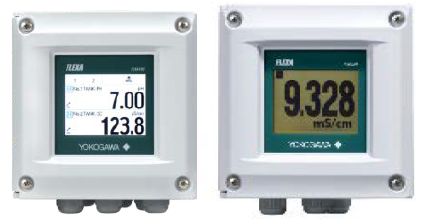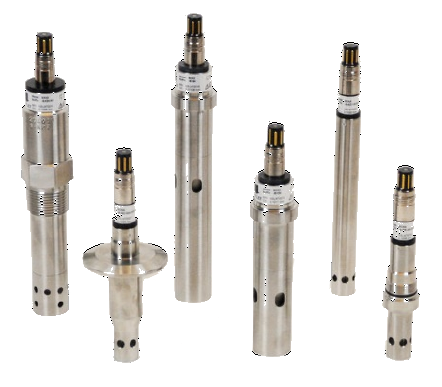Introduction
To defray energy costs, many industrial plants have their own boilers to generate steam in order to produce a portion of their energy needs. In addition to generating power, the steam may also be used directly in plant processes or indirectly via heat exchangers or steam jacketed vessels.
Problems
The raw water used to feed the boilers contains varying levels of impurities that must be removed to protect the boiler and associated equipment. Pre-treatment processes such as reverse osmosis, ion exchange, filtration, softening, and demineralization may be used to reduce the level of impurities, but even the best pretreatment processes will not remove them all and will continuously carry some dissolved mineral impurities into the boiler.
These dissolved impurities accumulate in the boiler water when steam is made; only pure water leaves the boiler. The increasing concentration of dissolved solids leads to carryover of boiler water into the steam, damaging piping, steam traps, and other process equipment. The concentration of dissolved solids increases until the boiler water can no longer hold all of them in solution and a saturation point is reached. They then begin to drop out becoming suspended solids and forming a sludge or scale on the boiler walls and piping.
Boiler problems are avoided by periodically discharging or “blowing down” water from the boiler to reduce the concentrations of suspended and total dissolved solids. Surface water blowdown is often done continuously to reduce the level of dissolved solids, and bottom blowdown is performed periodically to remove sludge or suspended solids from the bottom of the boiler. The frequency and level of blowdown required each day depends upon the concentration of impurities and the rate at which they build up in the boiler water.
Boilers operating on soft water will require more top or skimmer blowdown to remove dissolved solids, whereas boilers operating on hard water will require more bottom blowdown to remove the settled solids. While control of suspended and dissolved solids in the boiler is critical, care must be taken to avoid excessive blowdown, as this would increase the demand for make-up (feed) water, treatment chemicals, and fuel.
Benefits/Solutions
The benefits for proper boiler blowdown control include the following:
- Reduced operating costs (less feedwaterconsumption, chemical treatment, and higher heating efficiency).
- Reduced maintenance and repair costs (minimized carryover and deposits).
- Cleaner and more efficient steam.
- Minimized energy loss from boiler blowdown can save about 2% of a facility’s total energy use with an average simple payback of less than one year.
The most common methodologies used for boiler blowdown control include: (1) continuous, (2) manual and (3) automatic.
Continuous blowdown utilizes a calibrated valve and a blowdown tap near the boiler water surface. As the name implies, it continuously takes water from the top of the boiler at a predetermined rate to reduce the level of dissolved solids. The rate is usually set slightly greater than necessary to maintain safety protocols.
Manual blowdown is accomplished at most plants by taking boiler water samples once a shift and adjusting the blowdown accordingly. This grab sample approach means that operators cannot immediately respond to changes in feedwater conditions or variations in steam demand and scaling conditions can occur and go undetected until the next sample check.
Automatic blowdown control is achieved by constantly monitoring the conductivity value of the boiler water, adjusting the blowdown rate, and the duration based on a specific conductivity set point. This provides control of the water chemistry.
Manual blowdown control cannot maintain this level of control more than 20% of the time. Upgrading from manual blowdown control to automatic control can reduce a boiler’s energy use by 2 – 5 percent and blowdown water losses by up to 20 percent.
Feed water usually contains one limiting component such as chloride, sulfate, carbonate, or silica. Even if the component is not conductive, as is the case with silica, its concentration is usually proportional to a component that can be measured by conductivity. Therefore, conductivity is a viable measurement for monitoring the overall total dissolved solids present in the boiler. A rise in conductivity indicates a rise in the “contamination” of the boiler water.
Summary
The frequency and duration required for boiler blowdown is significantly affected by the water quality. Improving feedwater quality through makeup water, chemical treatment and proper blowdown control can significantly reduce treatment and operational costs including:
- Reduced operating costs
- Reduced maintenance and repair costs
- Cleaner and more efficient steam
- Energy savings
Increased efficiency and reduced operating costs can be achieved by using the Yokogawa Conductivity Series line of products. Control configurations will carry with the application and the customer’s requirements.
Product Recommendations
Conductivity Measurement System:
Process Liquid Analyzer:
2-wire FLXA202 Conductivity Analyzer
4-wire FLXA402 Conductivity Analyzer

Sensor Selection:
Analog and Digital SMART sensors are available. Analog options allow users to interface with a system that has been used historically. SENCOM™ technology, which allows sensors to transmit and receive data when connected to a transmitter/analyzer or a PC. The SMART digital sensors maintain specific measurement and calibration data on an integrated chip along that is an integral part of the sensor providing easy plug and play solutions. The data management software optimizes the performance of sensors for enhanced reliability and process safety.
Option #1:
SC42-S*34 Large-Bore Conductivity Sensor
(fittings available for Flow-Thru, Insertion, or Immersion installations)
Option #2:
SC4A Conductivity Sensor
(fittings available for Insertion, Sanitary, or Retractable installations.)

Another alternative would be Toroidal or Inductive Conductivity Sensor:
ISC40 Inductive Conductivity Sensor (fittings available for Flow-thru, Insertion, or Immersion installations)

行业
-
化工
化工厂依靠连续和批量的生产过程,每个生产过程对控制系统都有不同的要求。连续的过程需要一个强大而稳定的控制系统,该系统不能因为自身失效而导致生产线关闭;批量过程的重点在于拥有一个可以灵活调整地公式和程序的控制系统。两种系统都需要在产品质量记录中进行管理,并且能够执行非常规操作。横河电机凭借广泛的产品组合、经验丰富的系统工程师、遍及全球的销售和服务网络,为每个工厂流程提供解决方案。
-
油气下游
近年来,油气下游产业面临着越来越多的挑战。这些挑战包括待加工原料的特性变化、工艺设施及设备的老化、能源成本的上升、缺乏能够使炼油厂安全有效运行的熟练技术工人,以及市场和客户的需求不断变化。
多年来,横河与许多下游公司合作,致力于提供应对这些挑战和问题的工业解决方案。横河的VigilantPlant解决方案帮助工厂投资者尽可能实现最大的盈利能力和工厂内可持续的安全。
-
电力
电力
-
石油和天然气
石油和天然气
-
造纸
面对不断变化的市场需求,造纸行业的竞争也愈演愈烈。横河电机可以帮助节能工厂实现全球可持续性发展。
-
食品和饮料
在横河电机,我们了解当今的食品和饮料公司在气候变化、消费者需求和全球竞争力增强方面面临着前所未有的挑战。克服这些挑战需要创新的解决方案,需要重点关注生产、资产管理以及食品安全和质量等关键领域。
相关产品&解决方案
-
2-Wire Transmitter/Analyzer FLXA202
The FLEXA™ series analyzers are used for continuous on-line measurements in industrial installations. With an option for single or dual sensor measurement, they are the most flexible two-wire analyzer available.
-
FLXA202/21两线制变送器/分析仪
FLEXA™系列分析仪用于工业设施中的连续在线测量。它是灵活的两线制分析仪,可选择单传感器或双传感器测量。
-
FLXA402多通道四线制分析仪
FLEXA™系列分析仪是模块化设计的分析仪,用于在工业设施中进行连续在线测量。可提供单传感器或多传感器测量。
-
ISC40电感式(环形、无电极)电导率传感器
ISC40型传感器与EXA ISC分析仪组合使用。在可靠性、准确性、可调性和性价比方面,该组合满足甚至优于对电导率测量的期望。
-
SC42/SC4A(J)接触式电导率传感器
测量水溶液的特定电导率对于确定水中的杂质越来越重要。横河电机设计了一系列精密传感器和仪器,即使在极端条件下也能应对这些测量。
-
SC4A(J)/SC42纯水(低)电导率传感器
适用于半导体、电力、水和制药行业的低电导率应用,结构紧凑,使用方便。
-
Universal Contacting Conductivity Analyzers
The Contacting Conductivity method is especially suitable for low and ultra pure conductivity measurements. The analyzer works with a contacting conductivity sensor with built in temperature element.
-
SENCOM™ SMART数字传感器
数字或SMART传感器将特定的测量和标定数据保存在集成芯片上。集成芯片是传感器的重要组成部分。这些数据可以通过数据管理软件(如SPS24)在传感器和过程变送器或实验室PC之间进行交换。
-
电导率传感器
电导率传感器和电极用于测量过程电导率、电阻率、WIFI、软化水、RO水、百分比浓度、锅炉水排污和TDS。有伸缩式、流通式、浸入式和直插式等多种安装选项。选择合适的电极/传感器对优化测量结果至关重要。
-
电导率分析仪
电导率测量仪、分析仪和变送器用于对电导率、电阻率、WIFI、软化水、RO水、百分比浓度、锅炉水排污和TDS进行连续测量和监测。
